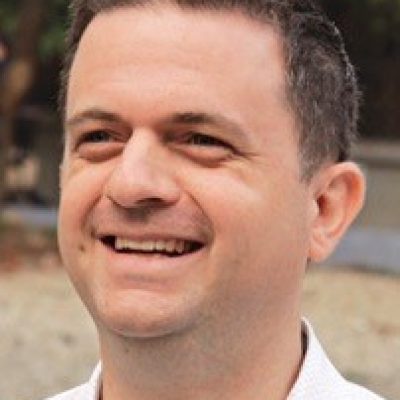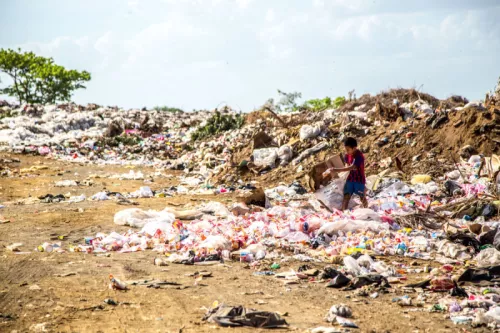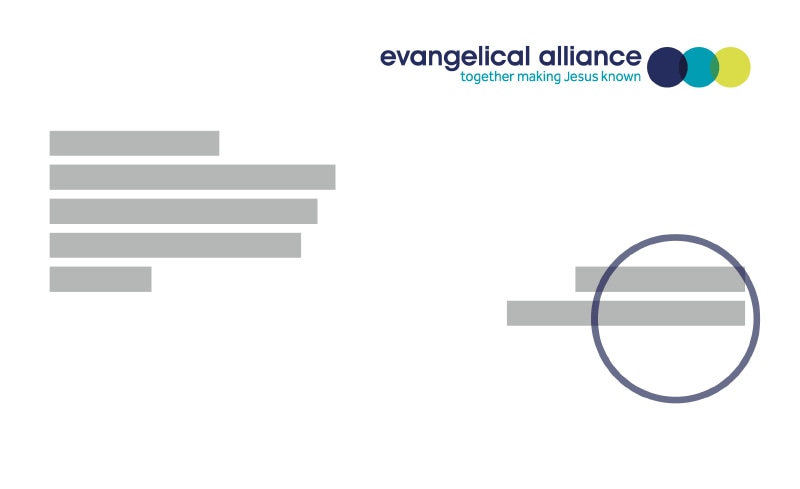A child climbs the hill. It’s not easy as the ground keeps moving beneath him. He pauses every so often to adjust his footing. He’s been scrambling up these mounds almost as long as he could walk and instinctively knows when to pause and when to push on ahead.
The aim is to close his stubby four-year-old hands around something valuable and take it back down. Not gold or money. But maybe a metal can, a plastic bottle, or perhaps a pile of old magazines. Anything for which his family might get a few centavos towards the week’s bread.
All around him is the sound of bulldozer engines and, over that, the calls of vultures, who constantly patrol the dust-filled sky above and fill the branches of every tree encircling an area locals refer to as The Dump. An enormous trash heap spanning 40 acres, The Dump grows bigger each year as the edges subside. Landslides are frequent and deaths usually remain uncounted. For this child, and for thousands of other people, The Dump is both home and workplace.
Just five miles away the scene couldn’t be more different. Streams of smiling students in brightly-colored clothing pass one another on clean concrete walkways lined by lush green grass. Their backpacks are full of books on every imaginable subject, from architecture and sociology to biology and linguistics. Palm trees, surrounded by vibrant orange and pink flowers, provide shade above the many clusters of circular benches where everyone streams for conversation between lectures.
Lining the main walkway of Universidad de San Carlos de Guatemala this day are a series of wooden easels. Each displays a student photograph or painting on the theme of ‘justice and sexuality’ along with a short printed explanation by the artist of their work. Around the images mill students in grey t-shirts, who strike up conversations with those who pause to look. On the back of their t-shirts is printed a logo reading, in Spanish, “Festival of Art for Life”. On the front of each one is a Bible verse. Mine reads “I came to give life to the full.”
The Festival of Art is organized by Grupo Evangélico Universitario de Guatemala (GEU), a Guatemalan student movement affiliated with the International Fellowship of Evangelical Students (IFES), and over the course of two days it will engage hundreds of students. Jhonny Corado, one of the driving forces behind the festival, told me that he wanted to both provoke the students — Christian or otherwise — to see the needs in their country and begin considering their response. They are the elite of the country and the ones who will shape its future. Many of the students will graduate from university to become perpetuators of the injustice and corruption which created and sustains The Dump.
To achieve this aim, GEU opened the creative side of the festival to all students and societies who might wish to participate. Most of the pictures lining the pathway are not by Christians. But they raise questions of hope, sexual identity, beauty, and much else besides. Just down from the easels in The Igloo, a circular several-hundred-seater auditorium sunk in the ground beneath a white and blue concrete dome, the questions raised in the paintings are being explored through other media.
From 10am until 10pm every day a series of dramatic and musical performances, dance pieces and spoken word acts are weaved around a series of TED-style talks from GEU staff and collaborators outlining a biblically-informed view of ecology, sexuality, human flourishing and economic oppression. The talks and discussions all include at least one Christian. But the other performances have — just like the paintings — been submitted by a broader segment of students from across campus.
One highpoint of the festival is a public dialogue between four people: a Marxist professor, a feminist activist, a gay visual artist and an El Salvadorian evangelical theologian, Olber Martinez. These four diverse characters, spread across a large sofa and a lone armchair, engage one another’s viewpoints with thoughtfulness and respect. Differences are not avoided but instead aired and dealt with directly. Otto Enriquez, a decades-long supporter and former board member of GEU, told me afterwards how enthused he was that so many students had now seen that the Christian faith offers a viable alternative to the other philosophies vying for students’ minds.
Not everybody, however, was so captivated. One student, seemingly a professing Christian, became so agitated by it all that he went outside and stormed GEU’s art exhibition. He proceeded to walk away with one of the pictures exploring sexual identity, before ripping it into shreds and scattering the pieces on the pavement as he shouted loudly that there was no place for LGBTQI+ students in Universidad de San Carlos de Guatemala.
All this occurred, ironically, at the exact moment in the dialogue that Olber Martinez was on The Igloo’s stage with gay visual artist Juan Pensamiento Velazco calmly debating sexuality and human flourishing. The contrast in approaches, each occurring just fifty meters apart, could not be more vivid: one was hostile and aggressive, while the other was respectful and dialogical. It seemed inconceivable to our iconoclastic intruder that the latter could occur without terrible compromise. Yet who could read the New Testament stories of Jesus, so stuffed full of His interaction with all kinds of people, and conclude that He — like Olber — would not be on the stage talking with Juan Pensamiento Velazco. Conversation was not a synonym for compromise in Jesus’ mind.
It’s easy to look around at one’s own culture and feel overwhelmed by our equivalent of The Dump – the big issues where we live. The path of least resistance is simply to avoid these matters. In Guatemala, though, the student movement believes that Christians should be participants in the conversations — and action — which shape the culture. The place they do this, as a student movement, is primarily in and around the university and among their colleagues. What can we learn from them? And how can we bring about change in our places and spaces so that God’s justice, which reigns in heaven, reigns on earth?
The September-October edition of idea magazine (entitled ‘God is just’) showcases how Christian individuals, organisations and churches around the UK are demonstrating God’s heart for justice by taking care of the vulnerable, marginalised and oppressed. Do check it out.
Photo by Hermes Rivera



